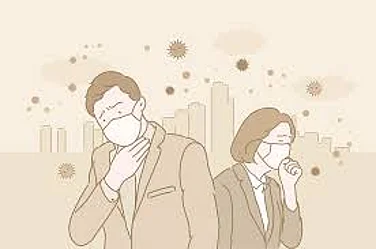Have you ever wondered how your nighttime habits might be affecting your heart health?
A groundbreaking study has revealed that increased exposure to light at night may be seriously disrupting your Circadian rhythms, which in turn raises the risks of five major cardiovascular diseases.
The Circadian rhythm, the body’s internal clock, plays a critical role in regulating vital health metrics such as blood pressure, heart rate, platelet activation, hormone secretion, and glucose metabolism. Disrupting this natural rhythm—through unnatural light exposure—could potentially have significant cardiovascular implications.
In a recent study titled "Personal Night Light Exposure Predicts Incidence of Cardiovascular Diseases in >88,000 Individuals," researchers from the Flinders Health and Medical Research Institute, in collaboration with teams from both the UK and the US, set out to explore the potential link between night-time light exposure and cardiovascular disease.
The study involved an impressive cohort of 88,905 participants from the UK Biobank, aged between 62 and 70 years. The majority of the participants were women. For a span of one week between 2013 and 2016, these individuals wore wrist-based light sensors to track their exposure to light during the day and night. This data was analyzed alongside cardiovascular health outcomes, which were recorded in the National Health Service (NHS) files through November 2022.
The results were alarming. Increased exposure to light at night was shown to have a dose-response relationship with an increased risk of developing five major cardiovascular diseases. The diseases included coronary artery disease, myocardial infarction (heart attack), heart failure, atrial fibrillation (irregular heartbeat), and stroke.
Participants classified in the 90–100th percentile of night-time light exposure experienced 23–32% higher hazard for coronary artery disease, 42–47% for myocardial infarction, 45–56% for heart failure, 28–32% for atrial fibrillation, and 28–30% for stroke compared with those in the 0-50th percentile, as per the study.
These associations held true even after adjusting for a wide range of factors, including age, sex, ethnicity, socioeconomic status, lifestyle habits (like physical activity, smoking, and alcohol consumption), clinical risk factors, and even genetic susceptibility.
Interestingly, the study found some variations based on gender and age. Women showed a stronger association between night light exposure and two specific diseases: heart failure and coronary artery disease. Younger participants, on the other hand, experienced stronger links between night-time light exposure and heart failure and atrial fibrillation.
The researchers pointed out that exposure to unnatural light—particularly at night—could lead to several metabolic and vascular disturbances that significantly elevate cardiovascular risks. For instance, impaired glucose tolerance can increase the susceptibility to diabetes, leading to endothelial dysfunction and atherosclerosis (hardening of the arteries).
Similarly, increased blood clotting (hypercoagulability) can raise the likelihood of thromboembolic events such as strokes. The sustained rise in blood pressure throughout the day and night can damage the vascular endothelium (the lining of the blood vessels), potentially leading to myocardial hypertrophy (thickening of the heart muscle).
At the same time, disrupted circadian rhythms can interfere with the natural timing of the heart’s electrical signals, raising the risk of irregular heartbeats.
The authors suggest that a simple yet practical approach to mitigating some of these risks might be to avoid bright light exposure during regular sleep times. In fact, integrating this behavior into broader cardiovascular prevention strategies could make a meaningful difference.
In addition, the researchers advocate for circadian-informed lighting strategies to be adopted in public spaces, homes, hospitals, and urban planning. By aligning lighting practices with natural rhythms, we could help reduce the adverse health effects caused by misalignment between our internal clocks and environmental cues.


























